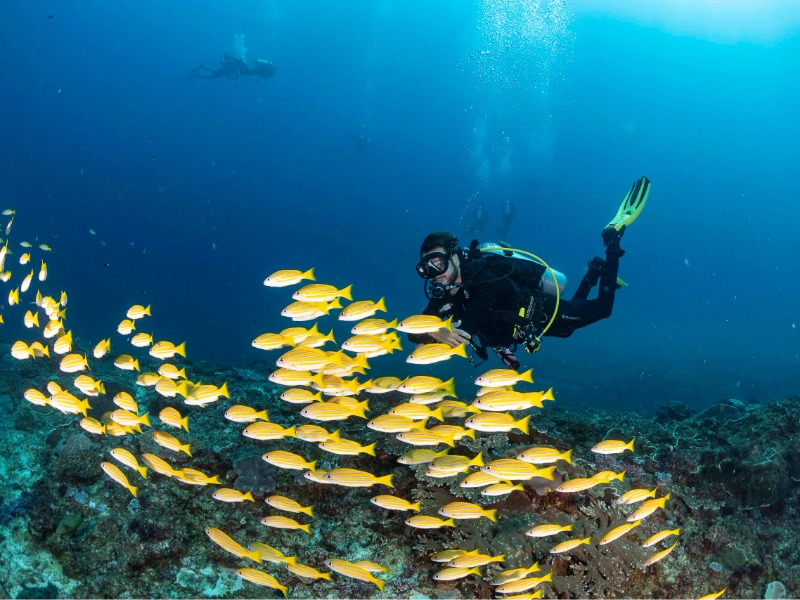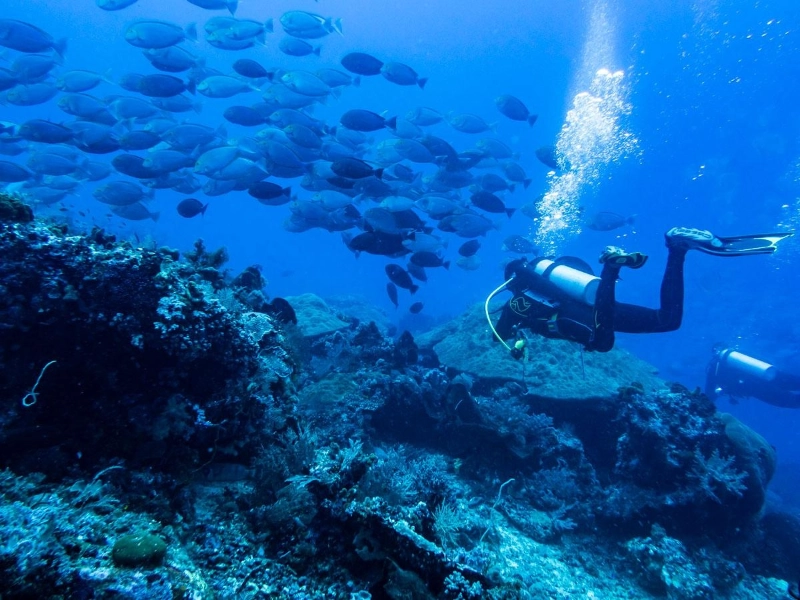Drift diving elevates a typical underwater experience into an extraordinary adventure. The familiar underwater landscapes transform into lively aquatic displays as the current carries you along, revealing a vibrant array of marine life. To successfully navigate a drift dive, divers need excellent buoyancy control and the ability to anticipate the current's movements. It's also essential to carry and be familiar with using a surface marker buoy (SMB) in case you become separated from your buddy.


Drift diving offers a unique blend of relaxation and excitement. Divers can descend, secure themselves on the reef or wall, and let nature take its course. As you drift, a variety of marine life swims by, including pelagic fish that are often seen hunting in the area. It's crucial to stay aware of the current, as its direction and speed can change unexpectedly. Observing visual cues, such as the movement of fish and flora, can help ensure you are moving in the right direction. During drift dives, especially those conducted from a live boat, dive guides or captains often track the group using a delayed surface marker buoy. It’s also beneficial for divers to carry their own buoy and practice deploying it beforehand to avoid separation during the dive.
 Drift diving is an exhilarating way to observe underwater wildlife, but it can pose risks if not done in a group and under the guidance of a knowledgeable dive leader. It’s wise to leave a written dive plan with someone on shore, detailing your planned entry and exit points.
The most critical piece of equipment for drift diving is buoyancy control. Losing track of your position in the current can lead to being swept far from your intended pick-up point, resulting in a lengthy surface swim or carrying heavy gear further than necessary.
A delayed surface marker buoy (DSMB) is typically essential for drift dives, accompanied by a line and reel or spool. Some divers also utilize reef hooks to secure themselves to rocks or reef structures for brief stops or gear adjustments.
Drift diving is an exhilarating way to observe underwater wildlife, but it can pose risks if not done in a group and under the guidance of a knowledgeable dive leader. It’s wise to leave a written dive plan with someone on shore, detailing your planned entry and exit points.
The most critical piece of equipment for drift diving is buoyancy control. Losing track of your position in the current can lead to being swept far from your intended pick-up point, resulting in a lengthy surface swim or carrying heavy gear further than necessary.
A delayed surface marker buoy (DSMB) is typically essential for drift dives, accompanied by a line and reel or spool. Some divers also utilize reef hooks to secure themselves to rocks or reef structures for brief stops or gear adjustments.
 Regardless of experience level, every diver should carry and know how to deploy a delayed surface marker buoy as part of their drift diving gear. This practice allows other dive boats to track the group, assist in locating misplaced divers, and adds an extra layer of safety.
It’s also wise to identify at least one, preferably two, alternate exit points during your drift dive. Changes in current strength, unfamiliarity with the site, or simple mistakes can lead to overshooting your planned exit location.
Mastering buoyancy control is vital in drift diving, as it allows you to maintain a vertical position in the water with minimal effort. As with all dives, it’s important to respect the environment and marine life by keeping a safe distance from coral reefs and sandy bottoms to prevent damage or disturbance. Ensure you remain well within your comfort zone and manage your air consumption throughout the dive, allowing you to fully enjoy the experience without fatigue.
Regardless of experience level, every diver should carry and know how to deploy a delayed surface marker buoy as part of their drift diving gear. This practice allows other dive boats to track the group, assist in locating misplaced divers, and adds an extra layer of safety.
It’s also wise to identify at least one, preferably two, alternate exit points during your drift dive. Changes in current strength, unfamiliarity with the site, or simple mistakes can lead to overshooting your planned exit location.
Mastering buoyancy control is vital in drift diving, as it allows you to maintain a vertical position in the water with minimal effort. As with all dives, it’s important to respect the environment and marine life by keeping a safe distance from coral reefs and sandy bottoms to prevent damage or disturbance. Ensure you remain well within your comfort zone and manage your air consumption throughout the dive, allowing you to fully enjoy the experience without fatigue.